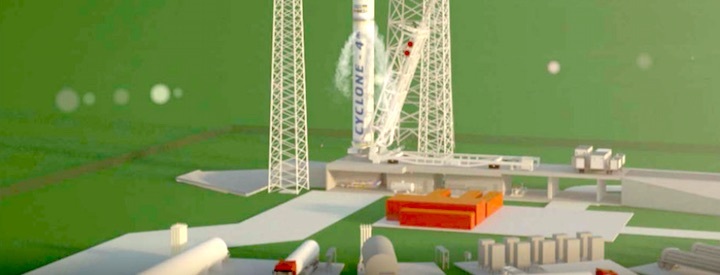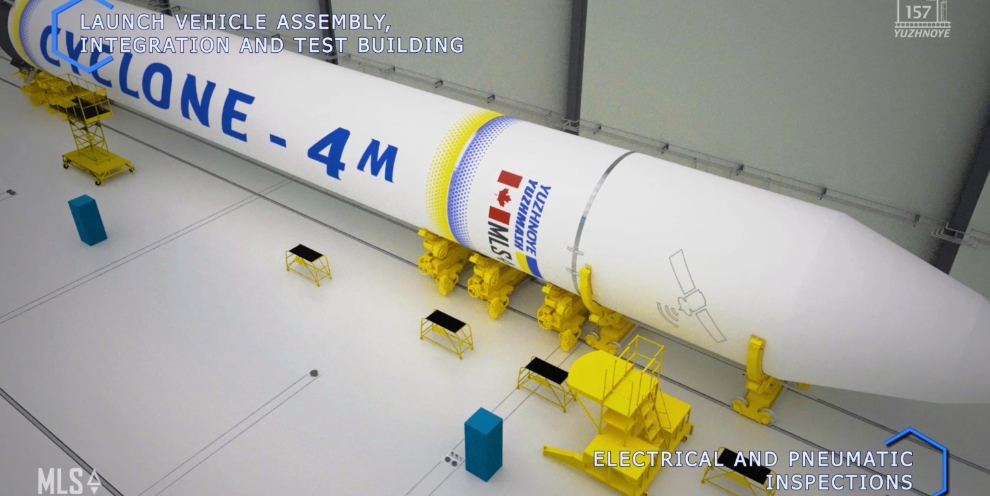29.04.2020

Today marks the start of a new feature we’re calling the Canadian Spaceport Launch Vehicle Power Rankings.
Hold on, what spaceport?
Canada does not have a spaceport. So why bother creating a Canadian Spaceport Launch Vehicle Power Rankings?
Well, in our opinion it’s just a matter of time before one is built. The likeliest candidate at the moment is the current effort of Maritime Launch Services (MLS) in Nova Scotia. The company is credible, has the expertise to make it happen, and importantly has completed an extensive environmental review that was approved by the province of Nova Scotia.
While the company has foot the bill to this point, it needs some larger investors in place before construction can start. MLS told the House of Commons Finance Committee in the fall of 2018 that the cost to build the spaceport would be $210 million.
Based on our conversations with MLS CEO Steve Matier there has been extensive discussions with potential investors, with at least one group seriously interested. Matier won’t reveal the name of the group at this point. He’s hopeful and is being very patient in bringing this project to fruition. It’s the culmination of a lifetime of work in the field.
MLS has partnered with Ukraine’s Yuzhnoye Design Office as the first customer of the spaceport. Yuzhnoye plans to use the Cyclone 4M rocket which is under development.
MLS however is aware that it will need more than one launch vehicle provider as a tenant at the spaceport as the project goes forward. That’s where the spaceport launch vehicle power rankings come in. We’re going to speculate a bit based on what launch vehicles are in development, and what we hear from our sources as to who else might be a tenant.

The Canadian spaceport launch vehicle power rankings
To make this fun, we’re using a sports analogy, power rankings. The rankings will be updated on a regular basis as new information is available. Naturally the power rankings will see launch vehicles move up, down and sometimes drop out altogether. Feel free to comment on the rankings and if you want to send us your input privately, email us spaceport at spaceq.ca.
The rankings will focus primarily on Canadian and US launch companies at this time as they are the most likely to use the spaceport. Of course, since MLS has signed on Yuzhnoye’s Cyclone 4M, they will be included.
One thing to remember, the spaceport as currently designed, is intended for small and medium launch vehicles. At some point large launch vehicles could be added.
Ok, here’s the first ever Canadian Spaceport Launch Vehicle Power Rankings:
10 – Electron, Rocket Lab (USA/New Zealand)
We would be hard pressed not to include Rocket Lab. They are well on their way to having a proven launch vehicle in the Electron. They currently launch out of Launch Complex 1, Mahia, New Zealand, and will soon be launching from Launch Complex 2 on Wallops Island, Virginia. They have no plans to launch from Canada, but that could change.
9 – OmegA, Northrop Grumman (USA)
The Northrop Grumman OmegA launch vehicle is not in service yet. The first launch is expected in 2021. While listed as an intermediate and heavy class launch vehicle, the intermediate version might be suitable for use at an upgraded Nova Scotia spaceport in 3-5 years after the facility is operational.
8 – Terran 1, Relativity Space (USA)
The Terran 1 is a small class launch vehicle that is 3D printed. The company currently has signed on with the Air Force to use Launch Complex 16 at the Cape Canaveral Air Force Station. They’ve also signed Telesat as a customer. It’s not inconceivable that they might one day consider launching from Canada.
7 – C6 Rocket, C6 Launch (Canadian)
This London, Ontario based company is promising on their website to have “24 launches a year beginning in 2022” and that “the C6 Rocket is easily transportable and can be launched from multiple different sites with ease.” That’s a lot of promise that we’re not so sure they can deliver on. They’ve partnered with Ursa Major Technologies, who will presumably provide them with their engines. We’ve yet to see a design or capability specs for their proposed rocket. They have some engineering talent. We’re giving them the benefit of the doubt, for now, that they might be able to pull something off. Funding could be their biggest obstacle.
6 – Rocket 1, Launcher Space
Launcher Space is a New York based startup and are currently in the Creative Destruction Lab cohort. They’re another company using 3D printed engines. They’re a ways off from launching, but look promising.
5 – Rocket 3.0, Astra Space (USA)
Astra founder and CEO is Chris Kemp someone I met almost 20 years when he was at the NASA Ames Research Center. He went on to become NASA’s Chief Technology Officer and started a few successful ventures. The rest of the Astra is impressive as well. They were the last team standing in the recent DARPA Launch Challenge. They failed to win as their launch was scrubbed shortly before the contest window closed. They’ve launched two suborbital missions from the Alaska Pacific Spaceport Complex. I could possibly see them interested in the Nova Scotia spaceport.
4 – SpinLaunch (USA)
SpinLaunch is like no other launch company that we’re aware of. They’ve developed an unusual kinetic launch system that does not rely on chemical rockets. Quoting Wikipedia, “the technology uses a centrifuge to store energy and will then rapidly transfer that energy into a catapult to send a payload to space at up to 4,800 kilometres per hour (3,000 mph).” They’ve raised US$80 million which means some investors believe in them. Why do they rank so high? Let’s just say they might be interested in having a Canadian spaceport option.
3 – Reaction Dynamics (Canadian)

Full disclosure, several years ago the founders of Reaction Dynamics approached me for some advice. I did so then, not so much now, though I keep in touch with them. This is another company with potential. They are patiently developing a new rocket engine with a new proprietary rocket fuel. I believe they are still a couple of years from attempting a launch. They’ve pivoted in the short term to providing some PPE for the local Montreal medical community as they can’t head out to their test site for engine tests. I believe they could be the first company to build a Canadian orbital rocket.
2 – Alpha and Beta, Firefly Aerospace (USA)
After going bankrupt in 2017 the assets of the company were bought by Noosphere Ventures led by Max Polyakov who was born in the Ukraine but who makes the US his home now. The company has strong ties to the Ukrainian space sector. The company has entered into several launch services agreements this past year and has a cooperative agreement with Aerojet Rocketdyne. It’s believed they may some interest in the Nova Scotia spaceport.
1 – Cyclone 4M, Yuzhnoye Design Office (Ukraine)
It comes as no surprise that Yuzhnoye is at the top of the rankings. After all, they’ve been looking for a spaceport to launch their small to medium class Cyclone vehicle for years. After Russia annexed the Crimea and ties between the two countries in rocket development were cut, the company has been looking for external partners and customers.
They funded the study that led to the Canso area location in Nova Scotia being selected. Steve Matier was the writer of that study. He decided after writing the study that he wanted the challenge of making the Nova Scotia spaceport a reality. So he convinced Yuzhnoye to be the customer, and he would, with his partners, build the spaceport under a new company, Maritime Launch Services.
Quelle: SpaceQ
